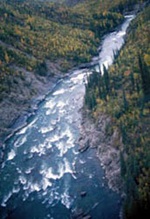
Visitor Safety

© Parks Canada / J.W.Borcoman
The more information you have and the more prepared you are for any eventuality, the more likely you will be to have a safe and enjoyable trip. You should be able to assess your own abilities, skill level and equipment against your planned activities, and always be prepared for emergencies. Potential sources of hazard include weather, wildfire, bears and river hazards such as water levels, water temperatures and flash floods.
Some key questions to ask yourself:
- What level of experience, skill and equipment do I and other group members have? Are my skill levels and equipment suitable for the intended trip?
- What type of trip should it be (canoe, whitewater raft)? What information, equipment or training do I still need? What are the hazards?
- What are the legal requirements?
- Where am I going to begin and complete the trip? Where are maps and other information available?
- What typical and extreme conditions (climate, water levels) can I expect at the time of year I intend to go? Is this suitable for my level of experience?
- How long will the trip take? How long will it take to get to the starting point, and home again once the trip is complete? How long a buffer period should I allow to deal with poor weather, travel delays, etc?
- Can I do this trip safely on my own? Should I consider going with a licensed commercial outfitter.
Planning a safe visit to a national park
Brochures
Fire in Canada's National Parks
Visitor Safety | Minimizing Risk | River Hazards | Wildfire | Bear Safety | Public Safety Registration and De-registration | Rating River Difficulty | Search and Rescue Program
- Date modified :